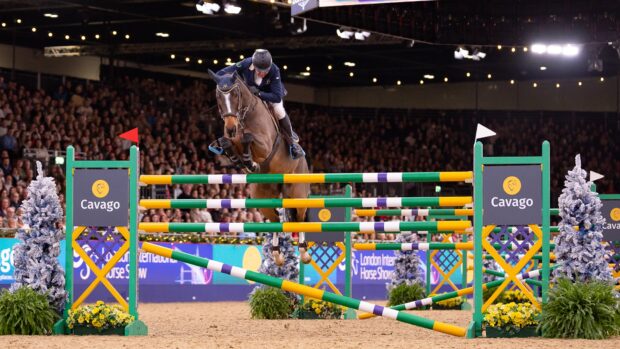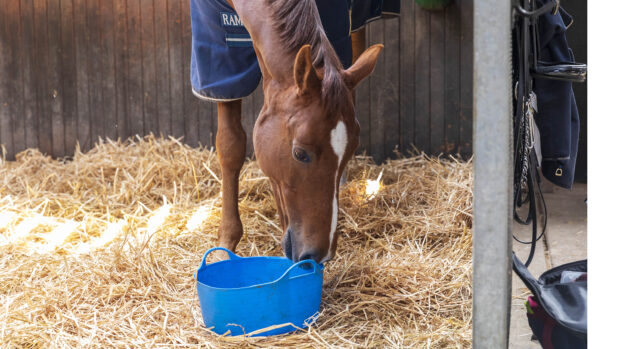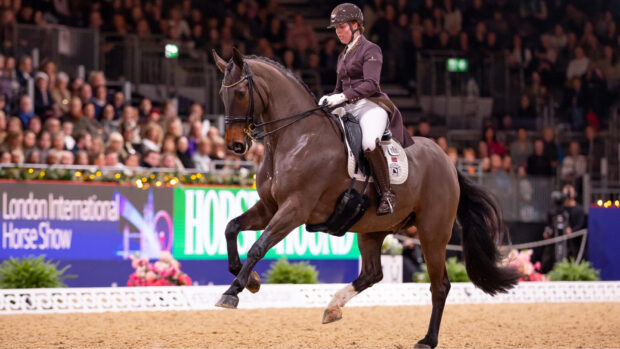International grand prix dressage rider Anna Ross on potential FEI rule changes – and some suggestions made by the public
Changes are afoot and there are amends to FEI rules being proposed. Those being considered that directly affect dressage include spurs being an optional rather than a compulsory aid, and bringing in a standardised way of checking the tightness of nosebands.
A taper tool is already used in some countries at national level, and set at 1.5cm, which is enough room for the noseband to serve its purpose while preventing over-tightening.
Double bridles could become optional at three-star internationals. Again, this sounds sensible; if the horse prefers a snaffle, why not?
I don’t think spurs, double bridles or nosebands are “wrong”, but recognising that each horse is an individual makes perfect sense to me.
There is some opposition to increased choice that threatens the current status quo. Perhaps it’s because those succeeding under current rules have a vested interest in maintaining the current system.
It’s important that all voices, including those of the emerging nations and younger competitors, are heard as well as the leading names, so that the aims for welfare, transparency and inclusivity are protected going forward.
Technology could help with transparency. Watching CHIO Aachen on my computer, I noticed a new SAP tracker pop up in the corner of my screen. One of its uses was to measure the size of the pirouettes, and we saw some of two metres diameter being awarded the same marks as others of one metre diameter.
The FEI directive on pirouettes is a bit woolly and says the size of the pirouette should be defined by the horse’s length. But I feel for the judges trying to assess this precisely, especially when the actual size is then flagged up by technology. Perhaps a combination where the judge marks the quality of the pirouette and there is a deduction for it being “oversized” would be a solution? The size does matter – it’s much easier to stay balanced in a big pirouette than a smaller one.
Perhaps technology and human judging can work in harmony, as they do in tennis.
Time for change?
President of the National Equine Welfare Council Dr David Marlin recently asked his Facebook followers what practices they would ban if they were the supreme ruler of equestrian sports.
One thing that several people were in favour of banning was young horse classes. This seems odd to me, as no one is obliged to enter or to over-pressure their horses in preparation for them. At home, we have a pool of young horses and we enter those that are ready for young horse classes, and the others go at their own pace. Young horse classes are judged differently to straight tests with marks equally awarded for three paces, way of going and future perspective. Unless your horse scores highly for each pace it can be more successful to focus on straight classes.
Rollkur was mentioned, too, but its definition is also in question. One man’s stretching is another man’s low, deep and round (LDR), and one man’s LDR is another man’s rollkur. Keyboard warriors often blame stewards for not challenging riders in warm-ups, but is it really fair to ask the stewards to do this? I’m not sure it is. If more rider scrutiny is deemed necessary, perhaps a veterinary panel would be more appropriate.
There was also support on social media for the use of voice to be allowed in tests. But I cannot see how this could work in practice. What could one say? “Goood boooy” with a strong vibrato booming through the showground? How loud would be permissible? Would screaming be allowed? Which words are acceptable and what else might slip out?
Some things are definitely better left unsaid, and what goes through our minds in moments of pressure should not always come out of our mouths unedited. To quote Robert Smith Surtees: “There is no secret so close as that between a rider and his horse.” I think it needs to stay that way.
One proposal suggested on Facebook received unanimous agreement: that tight, white men’s breeches without front pleats should be banned worldwide. Quite right too.
● What do you think about the proposed FEI rule changes? Let us know at hhletters@futurenet.com, including your name, nearest town and county, for the chance to have your views published in a future edition of Horse & Hound magazine
- This exclusive column will also be available to read in Horse & Hound magazine, on sale Thursday 20 July, 2023
You may also be interested in reading…

Noseband rules could be changed in all disciplines, plus other proposed revisions

Plan to allow dressage riders to ditch their spurs completely at top level

‘He was a dream to ride’: Carl Hester adds fresh grand prix win to star horse’s tally

Subscribe to Horse & Hound magazine today – and enjoy unlimited website access all year round
Horse & Hound magazine, out every Thursday, is packed with all the latest news and reports, as well as interviews, specials, nostalgia, vet and training advice. Find how you can enjoy the magazine delivered to your door every week, plus options to upgrade your subscription to access our online service that brings you breaking news and reports as well as other benefits.




